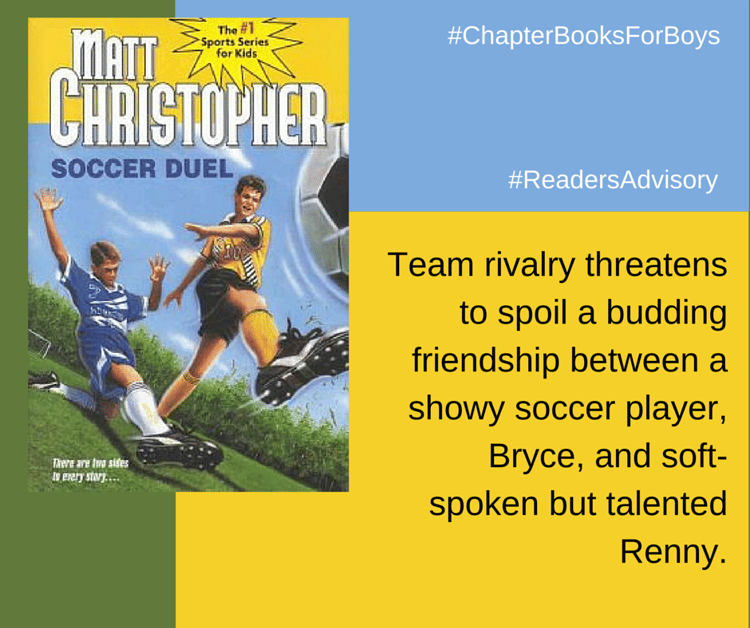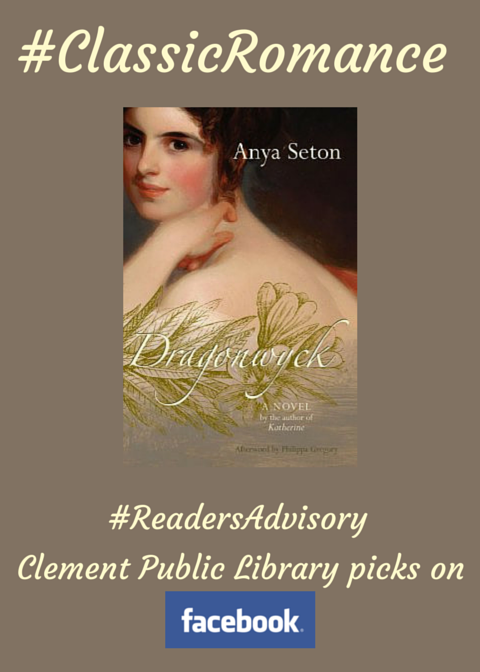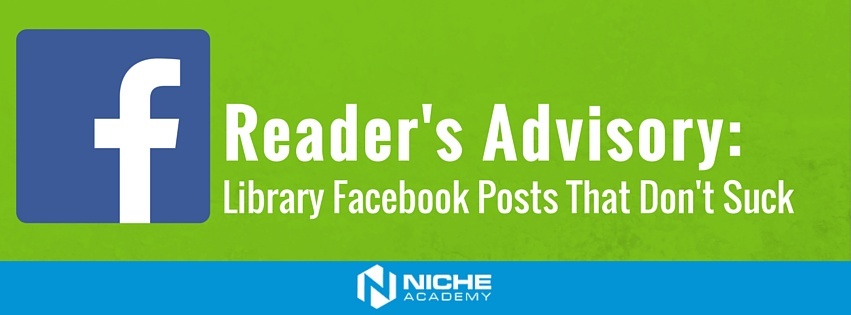Most libraries have a Facebook page these days. It’s the thing to do.
Having surveyed a fair sample of those pages, though, I think many libraries feel a bit disillusioned with the outcome. When they take a hard look at their view numbers and likes, it often seems like nobody is paying attention. Full many a library Facebook post is born to blush unseen. Furthermore, posting regularly is a significant time investment for thin-stretched staff resources.
I suspect these libraries feel a bit like the penguins in the movie Madagascar who finally get back to the wide open spaces of Antarctica--“Well this sucks.”
Reader’s Advisory is a great way to create a steady stream of really useful posts with a minimum of cost and effort. Books are still the core of what people look for in a library and reader’s advisory posts can highlight library collections in a way that people immediately understand.
Here are five simple tips for easy-to-create library Facebook posts using reader’s advisory.
1. Choose specific target groups
To start with, pick 3 or 4 specific groups that you know use the library and that could likely be enticed to check out the library Facebook page. By focusing on specific groups you significantly increase the chances that your facebook efforts will create meaningful new interactions with the library.
2. Make a book list for each group
You’re going to be posting a list of book recommendations for each group. Each recommendation will be its own post, but you will post them in rapid succession to lessen the risk that a lot of people will simply try to get the same book and be frustrated that all available copies are checked out.
Name each list in a way that people will self identify with them. You want to name your list such that patrons in the target group will say “Yes, that’s for me”, or, if they’re parents, “Yes, that’s what I’m looking for”.
If you’re targeting parents of young children, reading level will probably be enough, though you may want to specify gender. “Beginning Readers” or “Chapter Books for Boys”, for example.
If you’re targeting teens or adults, you’ll likely want to stick with a genre name that will resonate with your target group rather than naming the target group itself. “Classic Romance” is more likely to resonate than “Older Women”, for example. For inspiration on group names, check out the genre lists in Goodreads or in NoveList Plus, if you have it. Goodreads and NoveList Plus are also a great help in putting together your lists.
Use books that your library has, of course, but favor books that don’t see as much circulation and would likely be available when someone checks.
Over time, you can add new lists for these target groups or shift your focus to other groups depending on the success you see from your initial focus.
3. Make a posting schedule
Consistency is indispensable to creating meaningful interactions on social media. Think of your Facebook page like a stream that people come to visit from time to time. If the stream is dry or only offers stagnant pools when people come to visit, it’s less likely that they’ll visit again. If they visit and the stream is fresh, they’ll come back more often.
Once you have your lists, get a calendar and schedule two or three reader’s advisory posts each day. These posts will mix in with other announcements, photo posts, and library updates to form a steady, reliable, relevant, and appealing content stream that’s specific to your library.
4. Make each post appealing
- Include a picture of the book jacket. Save the largest version of the image you can find (whether from NoveList, Goodreads, or your catalog) to your hard drive and then upload that image to your Facebook post.
- In the text of your post, include a comment on why this book is appealing. If you have NoveList Plus, the appeal factors are great fodder for this. Goodreads reviews can also be helpful.
- If you have the title available in electronic format, note that fact.
- If your ILS supports it, provide a link directly to the title record in your ILS. If the link is long, use a URL shortener like Bitly.
- Finally, use hashtags. You’ll want two hashtags in each post. One hashtag will be the name of the list, the other will be a tag that you apply to all your reader’s advisory posts. If you worked for Clement Public Library, for example, you might have a list tag like this: #CPLClassicRomance. Note the library-specific acronym at the start of the tag. This makes it easy to find when people are searching for the tag on Facebook. The second tag would be #CPLReadersAdvisory. Hashtags let people quickly search Facebook to find the related posts. The first hashtag will point your target audience to a list of books they can choose from. The second tag will make it clear what the first tag is for and also let people browse other lists that might be of interest.
Here’s a sample post with text followed by an image:
Soccer Duel by Matt Christopher http://bit.ly/1KPf3Wb Action-packed, Sports Fiction #ChapterBooksForBoys #ReadersAdvisory

5. Refer people to your posts
One of the simplest ways to begin to attract attention to these lists is to place inexpensive 8.5x11 signs around the library that reference your hashtags and point people to Facebook. See the example below. You can also enlist the reference and circulation folks. If they’re willing, they can mention the lists in small talk during checkout and maybe even in the process of answering questions.

When used effectively, reader’s advisory on Facebook is a low-cost way to build online relationships with the groups you most need to connect with.

